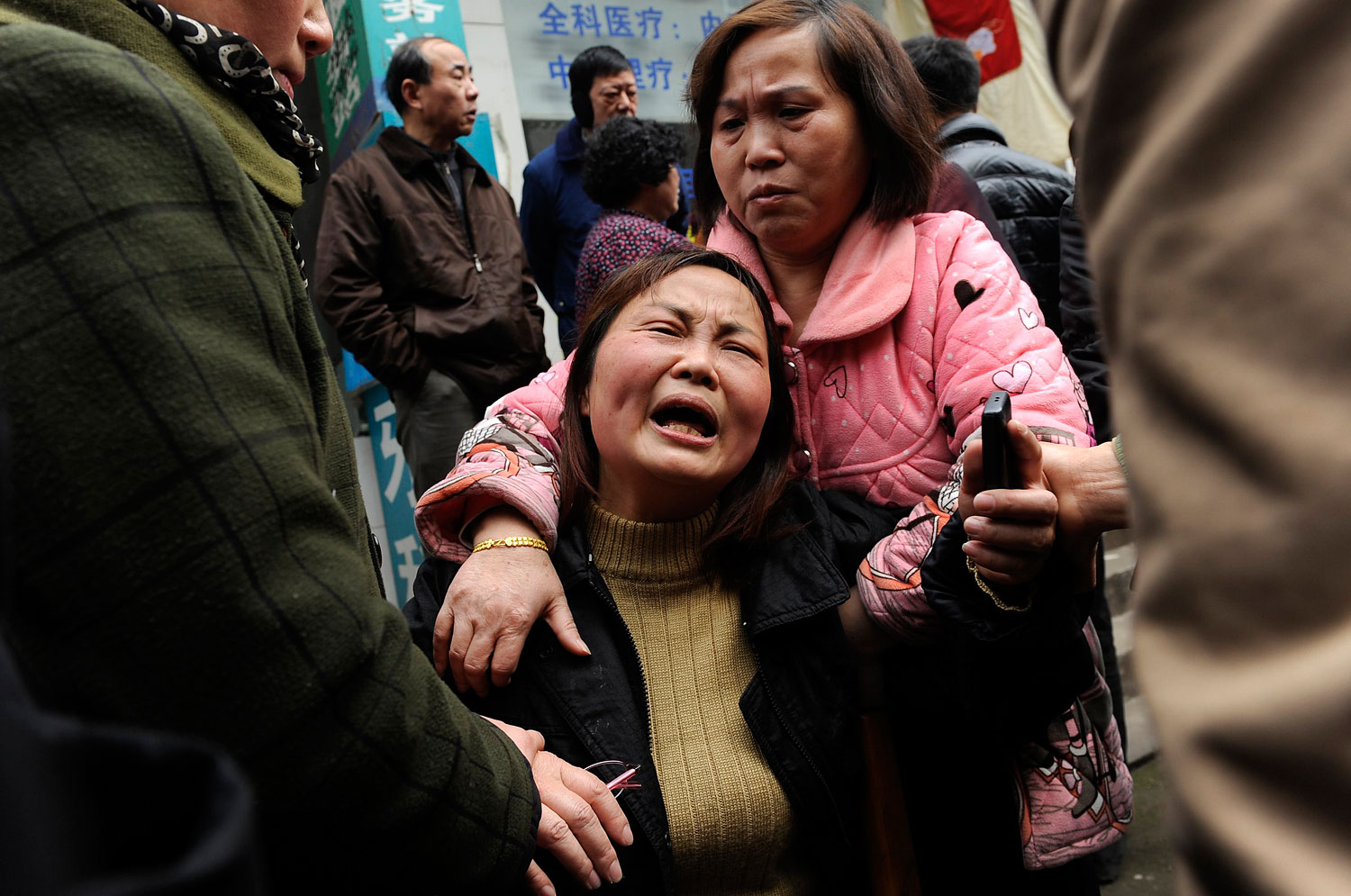
Not again? On the morning of March 14, knife-wielding individuals unleashed a stabbing attack in Changsha, the capital of central China’s Hunan province. Three people were killed and two seriously injured, according to Chinese media. In addition, one suspect was shot dead by police and another was captured, reported the People’s Daily, the mouthpiece of the Chinese Communist Party. Three suspects are still at large.
Friday morning’s bloodshed echoed a far deadlier rampage on March 1 in the southwestern city of Kunming, which resulted in 29 deaths and more than 140 injuries. That mass murder binge was blamed by the Chinese government on separatists from the troubled northwestern region of Xinjiang, which is home to the Turkic-speaking, largely Muslim Uighur ethnic minority. All eight of the assailants were either killed or captured. Only one of the attackers’ names has been made public. A couple of days after the carnage, Chinese authorities deemed the case “solved.”
Hunan Metropolis TV reported that Friday’s violence originated with an altercation between street vendors. The Oriental Morning Post, a Shanghai-based newspaper, gave more details: employees at a Xinjiang-style bakery — Uighur flatbreads are popular street food in parts of China — began fighting. One stabbed the other to death and then lashed out at passersby. Hunan Transportation Radio filed a different take: the catalyzing fight took place not between vendors but between a bakery employee and locals buying bread.
If either of these accounts is correct, Friday’s bloodshed seems unlikely to be another terror attack, like the one in Kunming that seemed designed for maximum horror. Xinhua, the state news agency that is usually the main arbiter of major Chinese news, has not yet described the origins of the attack.
Photos allegedly of the incident on the People’s Daily’s Weibo microblog feed show human figures lying prone on the street. Another image is purportedly of the captured assailant. His arms look like they have been handcuffed behind him, and policemen appear to be leading him toward a police vehicle. The man has a mustache; he does not look like a typical Han, the ethnic majority group of China.
Large-scale paroxysms of violence, like the terror attack in Kunming, are extremely rare in China, where a security state and lack of gun ownership have helped prevent mass bloodshed. But it’s not uncommon for frustrated individuals — often nursing some sort of unresolved legal or societal grievances — to slash at people in crowded public places. Nearly all of these incidents outside Xinjiang have involved disaffected Han. In fact, last September, a male former hospital patient attacked three nurses with a knife. The city was Changsha.
— With reporting by Gu Yongqiang/Beijing
More Must-Reads from TIME
- Why Trump’s Message Worked on Latino Men
- What Trump’s Win Could Mean for Housing
- The 100 Must-Read Books of 2024
- Sleep Doctors Share the 1 Tip That’s Changed Their Lives
- Column: Let’s Bring Back Romance
- What It’s Like to Have Long COVID As a Kid
- FX’s Say Nothing Is the Must-Watch Political Thriller of 2024
- Merle Bombardieri Is Helping People Make the Baby Decision
Contact us at letters@time.com